We're all for San Antonio's recent designation as a UNESCO Creative City of Gastronomy, but it's abundantly clear that our city has always been a place that celebrates food and drink. Sometimes a little too much.
Check out these historic photos of a fascinating array of SA spots where people gathered to scarf down tacos, quaff way too much locally brewed beer and engage in drunken games of Rolle Bolle (stick with us until Slide 18 if you don't know what that is).
Some of these places, such as Mi Tierra and Casa Rio, are still serving guests, while others, from Don's Keyhole Club to Kinky and Nando's Grill, are regrettably long gone. All fed our souls well.
All photos from UTSA Special Collections digital collections.
Historic photos of 25 San Antonio-area bars and restaurants
By Sanford Nowlin on Thu, Sep 30, 2021 at 4:28 pm
Tags:
- San Antonio history,
- San Antonio Restaurants,
- San Antonio Bars,
- San Antonio food,
- UNESCO Creative City of Gastronomy,
- Mi Tierra,
- Casa Rio,
- Don's Keyhole Club,
- Kinky and Nando's Grill,
- Tip's Place,
- Tip's Lanes,
- rudential Cafe,
- old San Antonio,
- Azteca Cafe,
- White House Cafe,
- San Antonio breweries,
- Veramendi Saloon,
- downtown San Antonio,
- Emile F. Jungmann's Saloon,
- Golden Star Café,
- Plaza Bar,
- Moon Lee Café,
- St. Hedwig,
- Polish Americans,
- Lone Star Beer,
- Belgian Americans,
- Alsatian Americans,
- German Americans,
- Woeltz Building,
- Finck Cigar Co.,
- Peter Brothers Brewery and Saloon,
- John Peter,
- Gus Peter,
- Youngblood's Fried Chicken,
- LaCoste Exchange,
- Charles Degen Brewery and Saloon,
- Kinky and Nando's Grill,
- Louis Bizy Saloon Fine Liquors and Cigars,
- De Winne's Belgian Inn,
- Casa Rio,
- Japanese Tea Garden,
- Brackenridge Park,
- Jingu family,
- Green Tree Cafe,
- Hung Fong,
- Family Garden,
- Pearl Beer,
- 1900s San Antonio,
- 1800s San Antonio,
- San Antonio old photos,
- Buffalo Cafe,
- old photos of San Antonio,
- UTSA Special Collections,
- Institute of Texan Cultures,
- chili queens,
- chili stands,
- Chile queens,
- Chile stands,
- Tex-Mex,
- Mexican food
Scroll down to view images
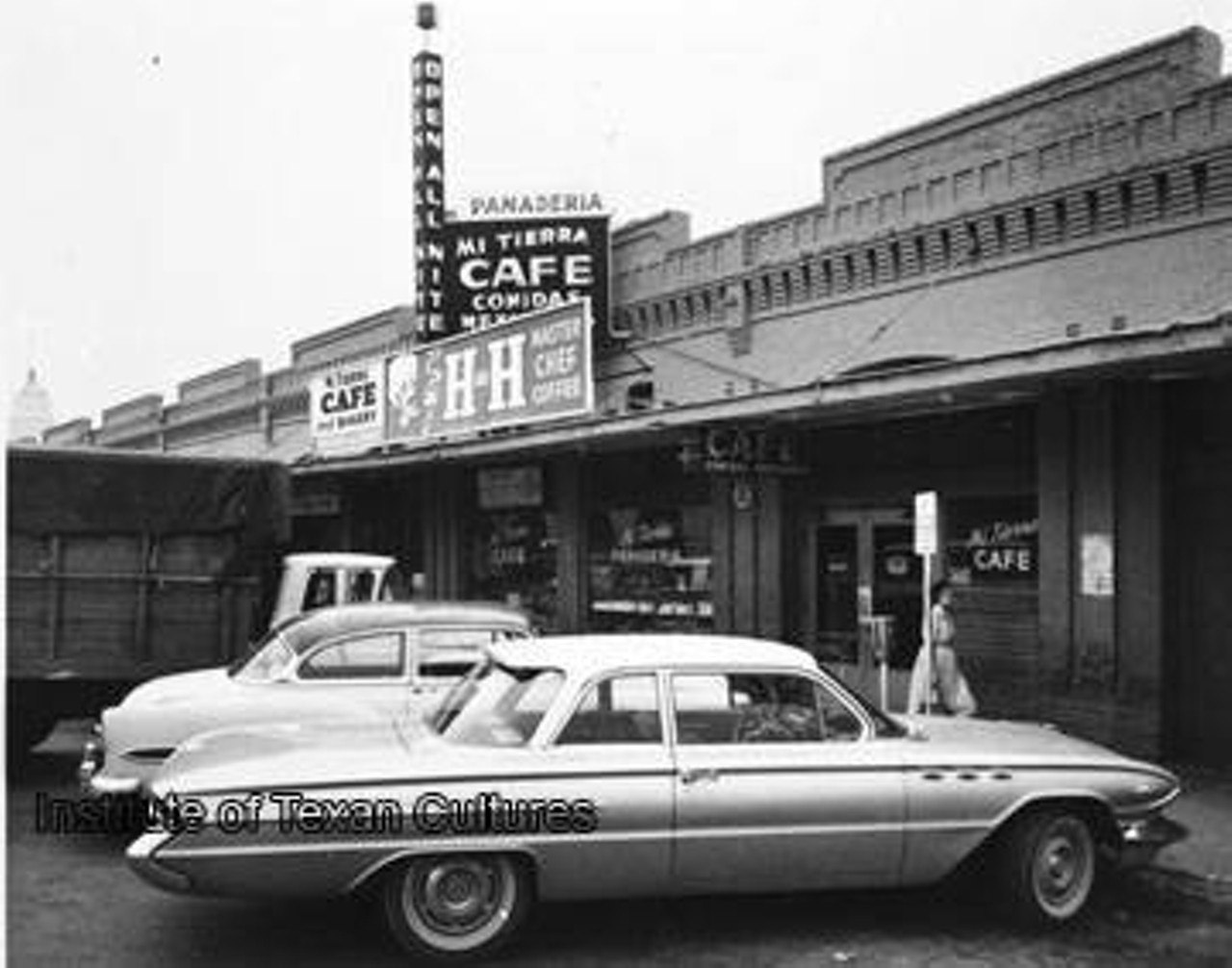
Mi Tierra Cafe, 218 Produce Row
This photo shows the front of the café and panaderia as it looked circa 1965. The colorful restaurant has grown into a beloved Alamo City institution that draws residents and tourists alike.
This photo shows the front of the café and panaderia as it looked circa 1965. The colorful restaurant has grown into a beloved Alamo City institution that draws residents and tourists alike.
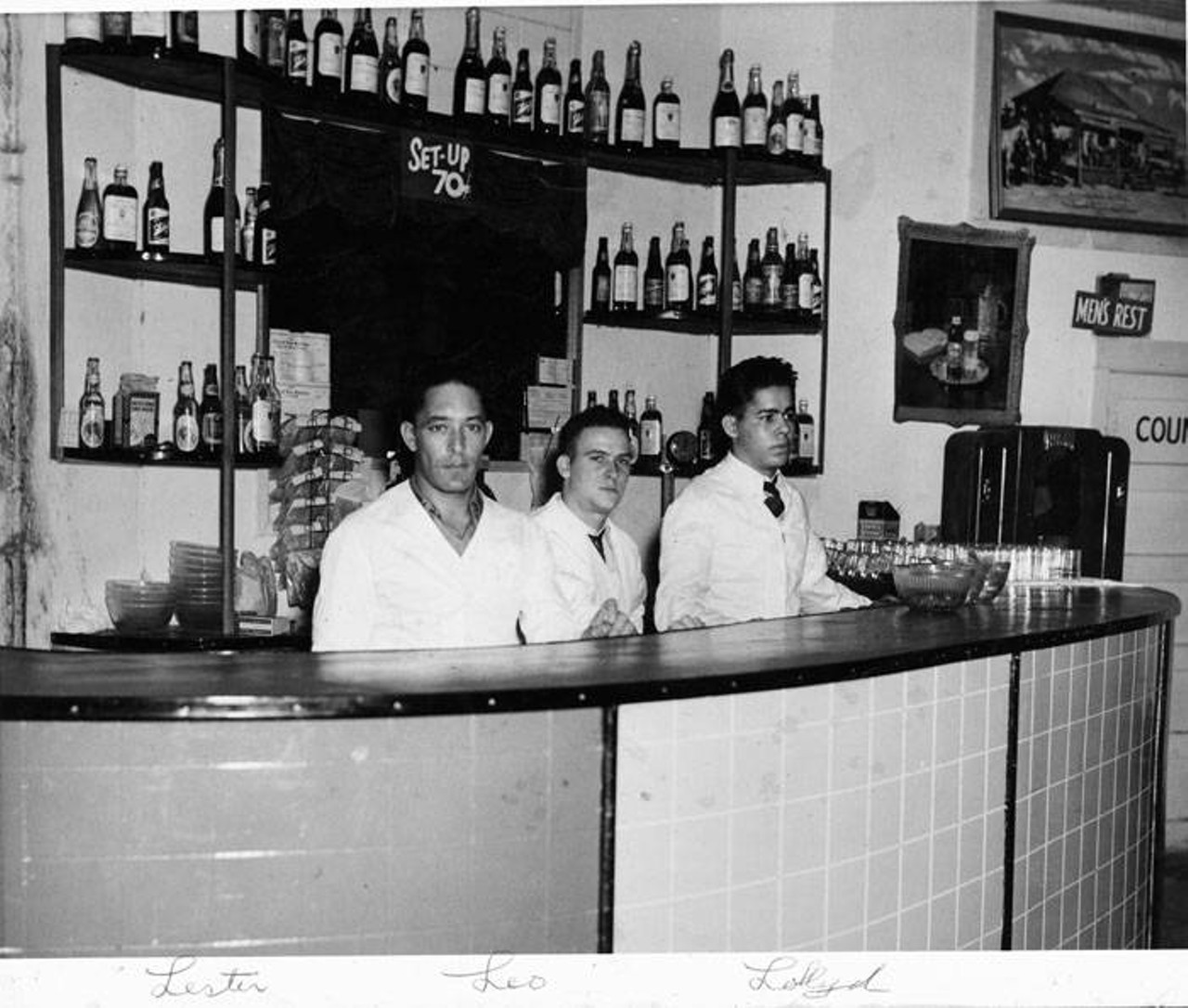
Don's Keyhole Club, 728 Iowa St.
Bartenders in white jackets stand ready to pour drinks in this 1940s photo from the East Side nightclub owned by jazz bandleader Albert ''Don Albert'' Dominique. The famed music veue is considered by many to be the first racially integrated nightclub in the Southwest.
Bartenders in white jackets stand ready to pour drinks in this 1940s photo from the East Side nightclub owned by jazz bandleader Albert ''Don Albert'' Dominique. The famed music veue is considered by many to be the first racially integrated nightclub in the Southwest.
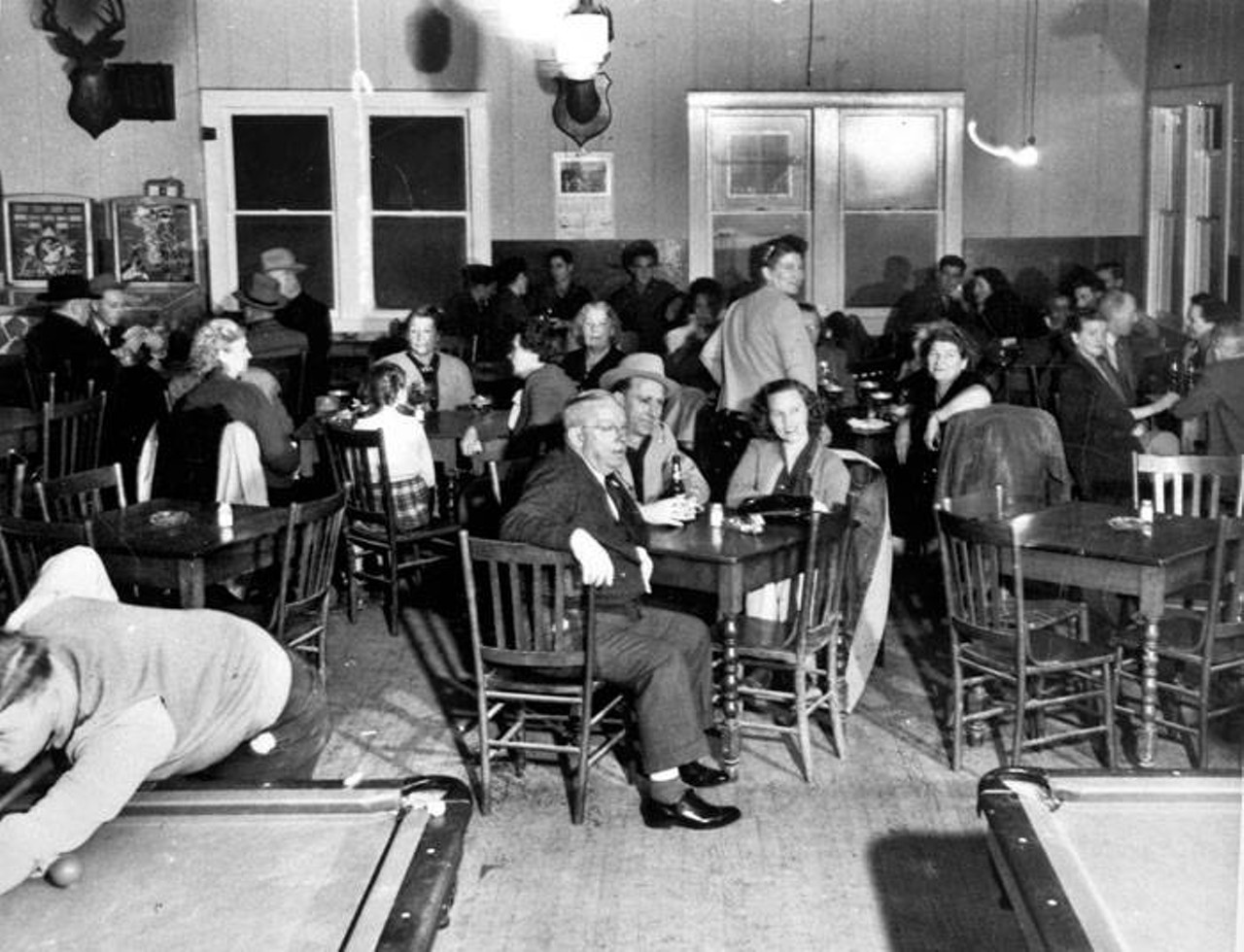
Tip's Place, 2351 Frio City Road
This bar and restaurant, shown in a 1946 photo, was a popular gathering spot near the old Kelly Field. So much so, the owner later also opened an adjacent bowling alley called Tip’s Lanes. Both closed during the ‘60s to make way for a road connecting the base to U.S. Highway 90.
This bar and restaurant, shown in a 1946 photo, was a popular gathering spot near the old Kelly Field. So much so, the owner later also opened an adjacent bowling alley called Tip’s Lanes. Both closed during the ‘60s to make way for a road connecting the base to U.S. Highway 90.
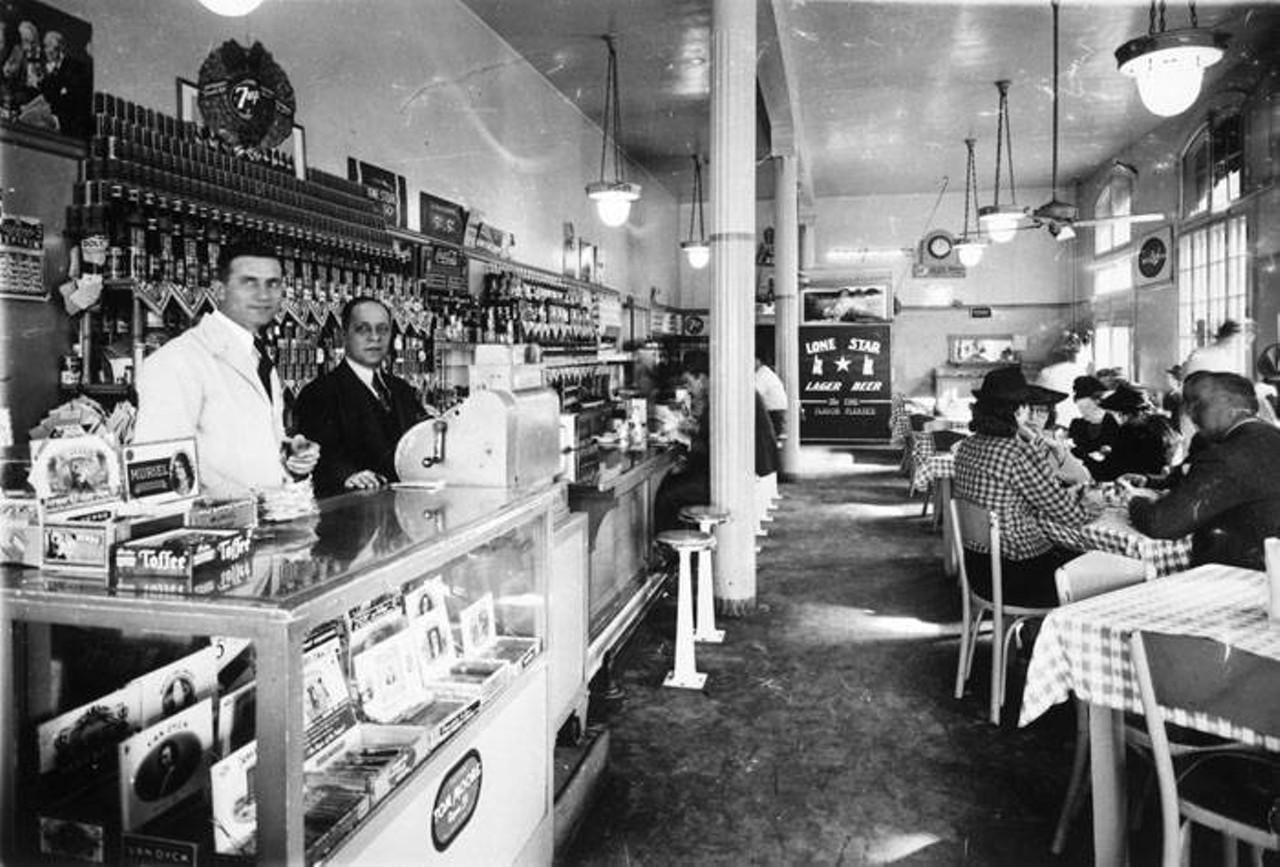
Prudential Cafe, 130 Main Plaza
The dining establishment shown in this 1939 photo was inside the Prudential Life Insurance Building on east side of Main Plaza. The space is now occupied by Tex-Mex eatery La Jalisco.
The dining establishment shown in this 1939 photo was inside the Prudential Life Insurance Building on east side of Main Plaza. The space is now occupied by Tex-Mex eatery La Jalisco.
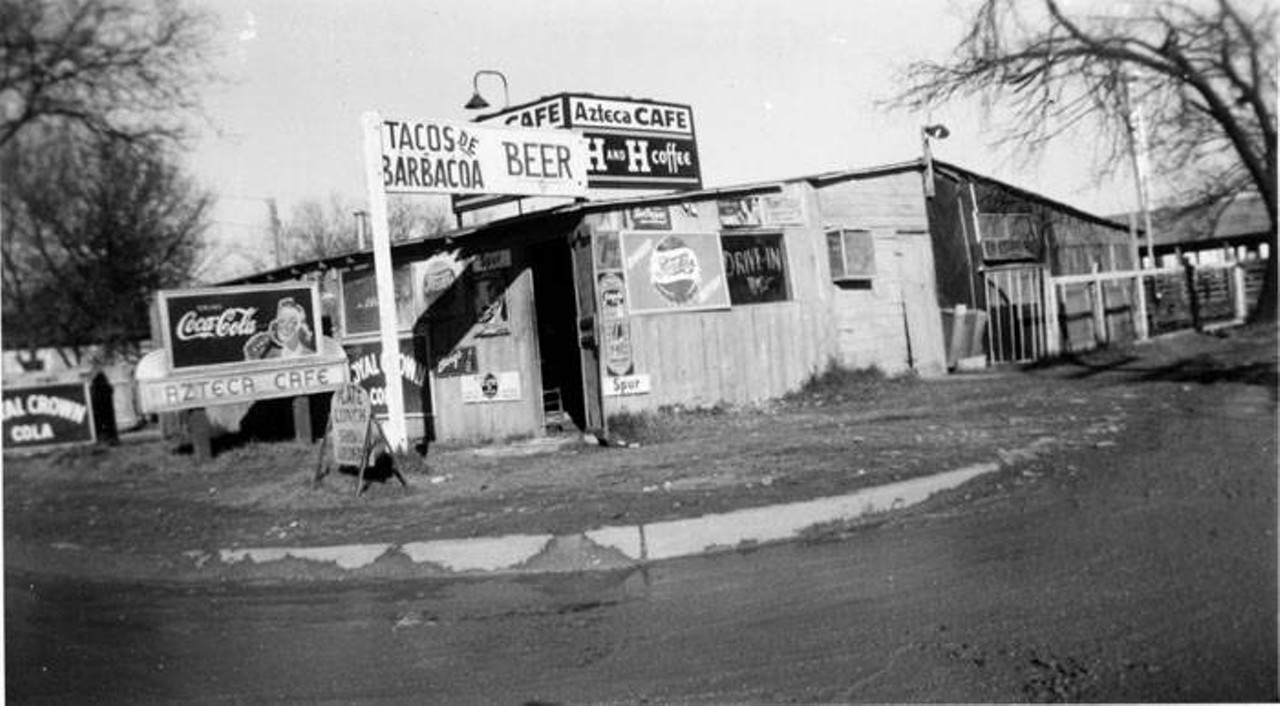
Azteca Cafe, San Antonio
It’s unclear exactly where Azteca Cafe was located, but according to the signage in this 1949 photo, tacos de barbacoa were a specialty — as was beer.
It’s unclear exactly where Azteca Cafe was located, but according to the signage in this 1949 photo, tacos de barbacoa were a specialty — as was beer.
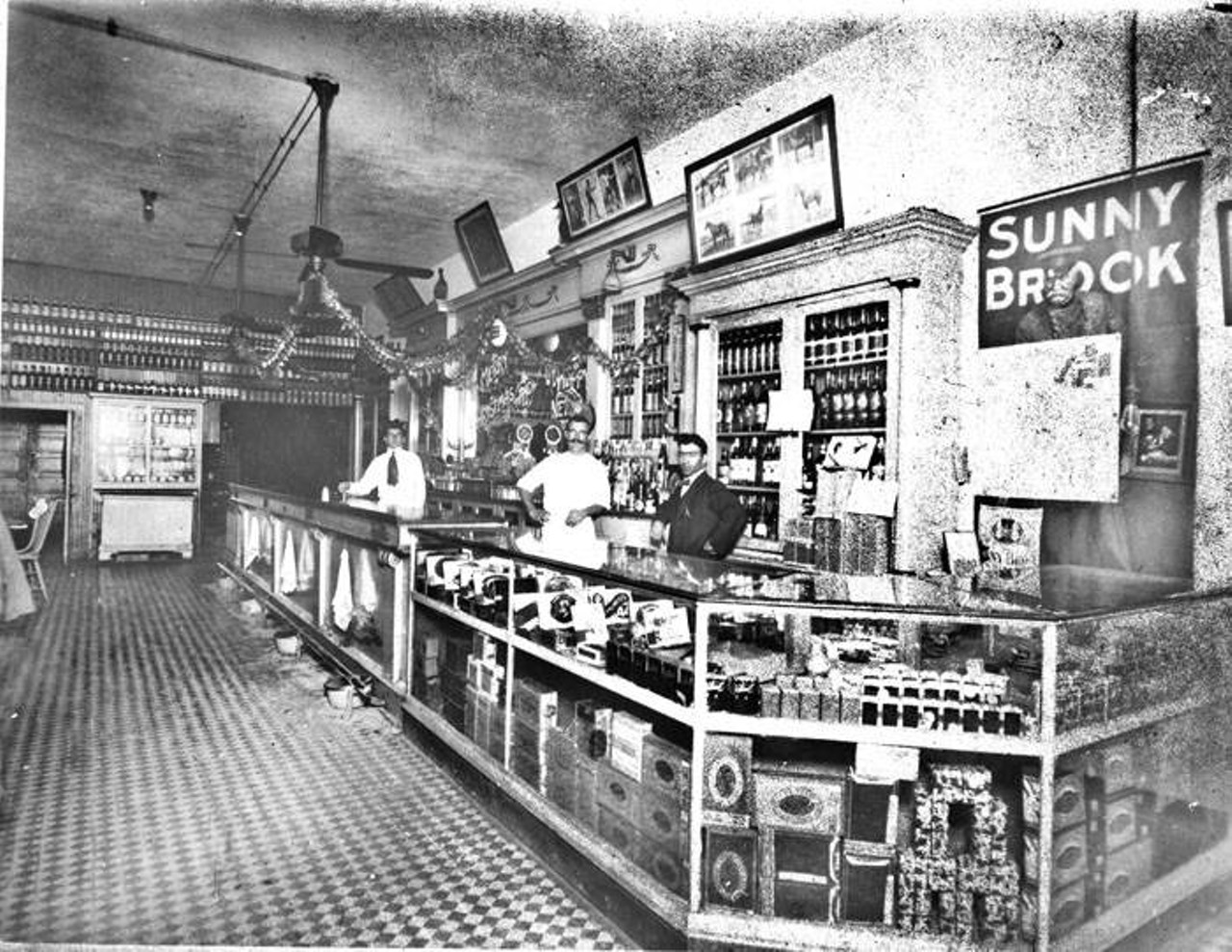
The White House Café, 312 Produce Row
In addition to food and drink for on-site consumption, this diversified business also sold liquor, wine and cigars. Owners Aviel Bauwens (center) and Eugenio Amantea (right) appear in this 1915-era photo.
In addition to food and drink for on-site consumption, this diversified business also sold liquor, wine and cigars. Owners Aviel Bauwens (center) and Eugenio Amantea (right) appear in this 1915-era photo.
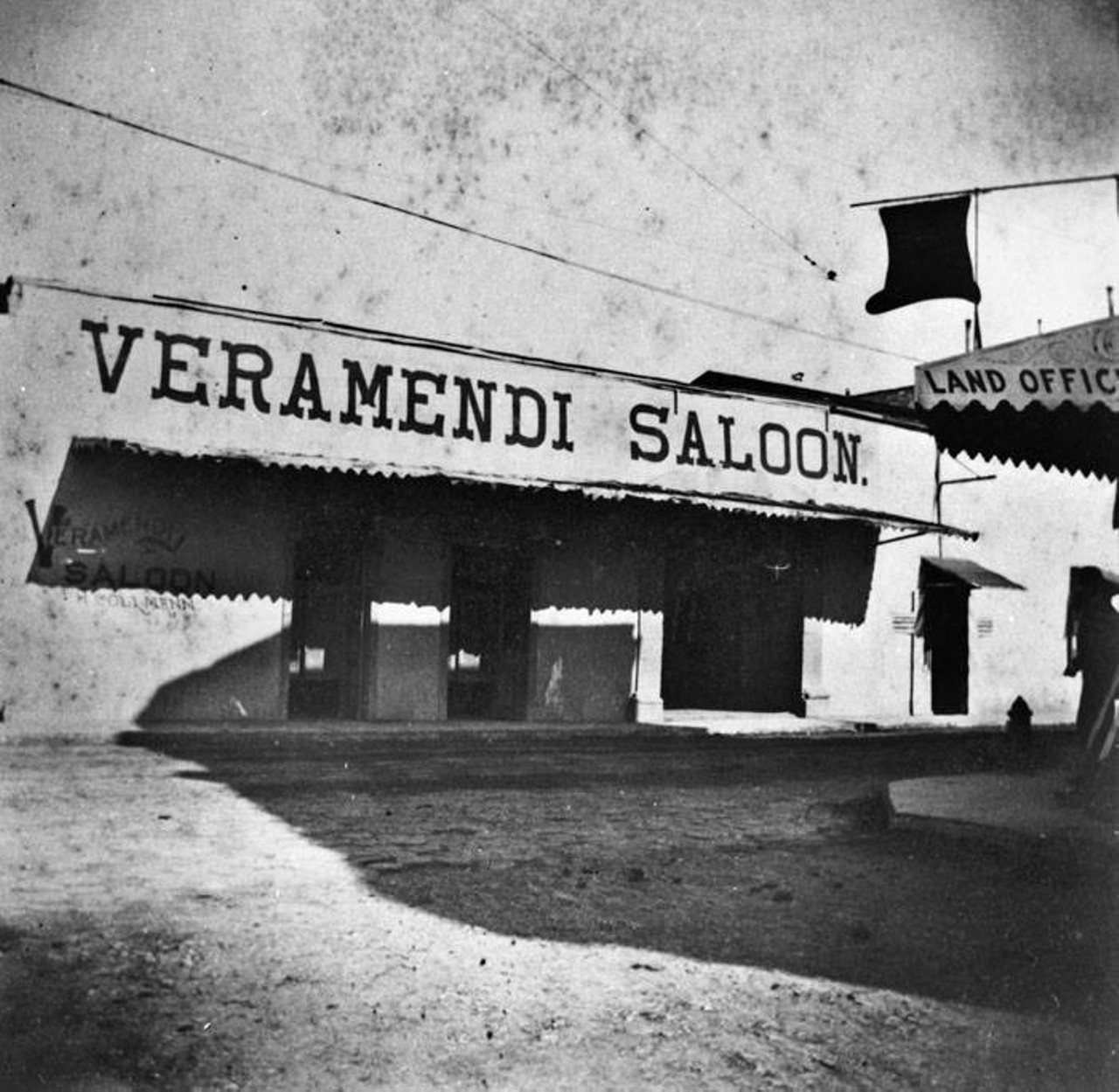
Veramendi Saloon, Soledad Street
This photo from the late 1890s shows a San Antonio watering hole that started business with a far more elegant moniker: Veramendi Palace.
This photo from the late 1890s shows a San Antonio watering hole that started business with a far more elegant moniker: Veramendi Palace.
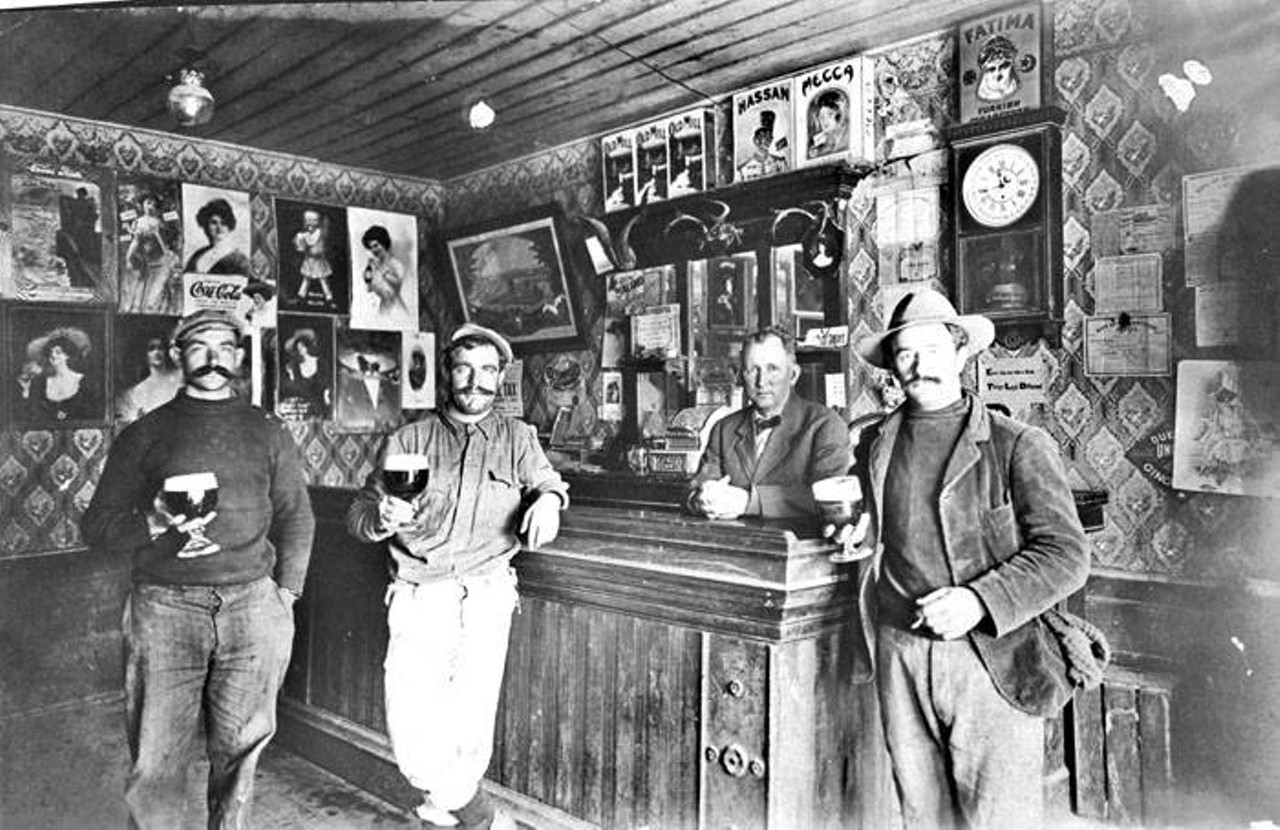
Emile F. Jungmann's Saloon, 2304 W. Commerce St.
This photo from around 1912 shows members of the Alamo City’s Belgian American community enjoying fishbowl-sized glasses of dark beer. Yum.
This photo from around 1912 shows members of the Alamo City’s Belgian American community enjoying fishbowl-sized glasses of dark beer. Yum.
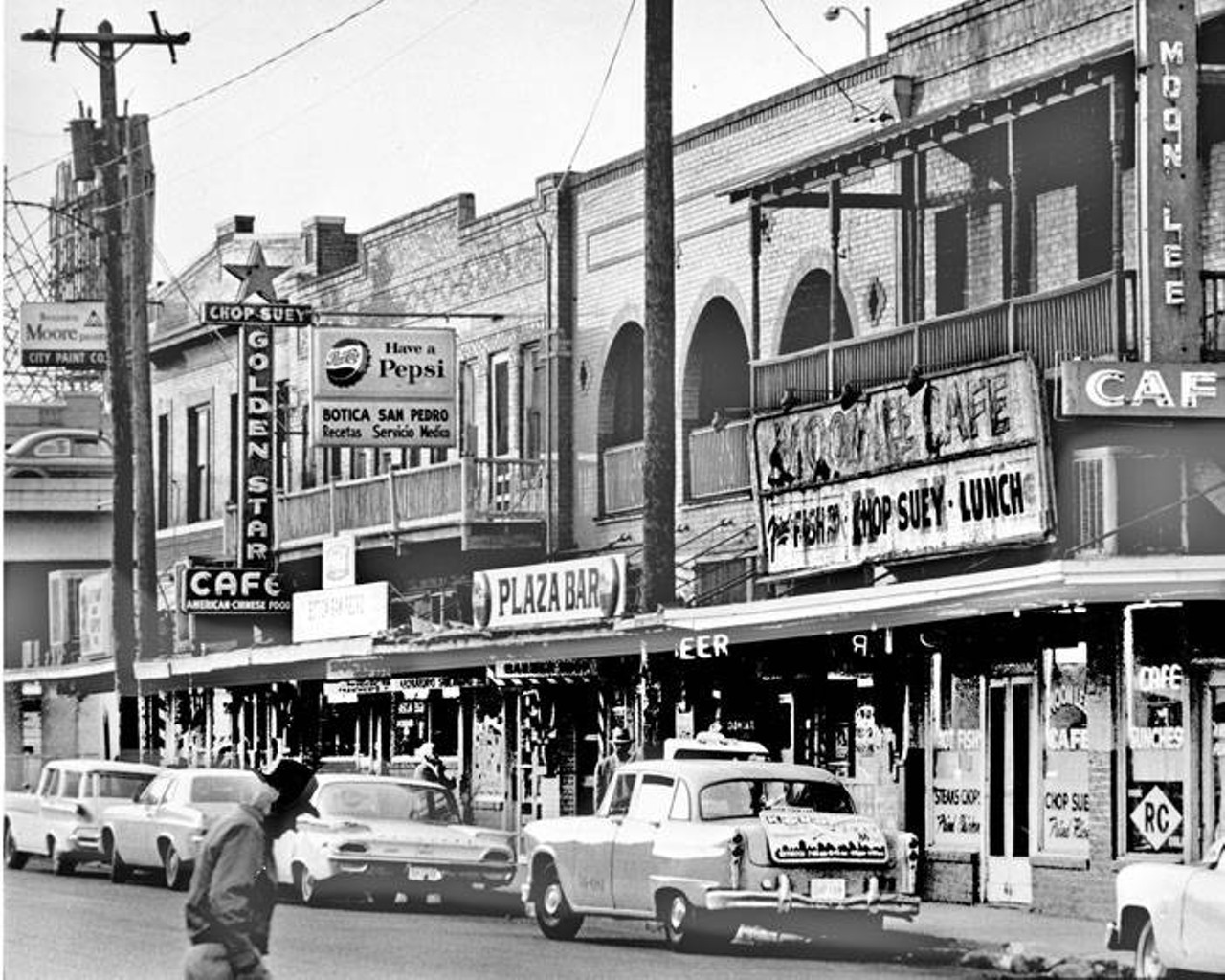
Golden Star Café; Plaza Bar; Moon Lee Café, 1100 block of W. Commerce St.
This image from around 1965 shows a string of West Side businesses, including a pair of Chinese restaurants. Golden Star Café is still around, although it's now located at the 800 block of the same street.
This image from around 1965 shows a string of West Side businesses, including a pair of Chinese restaurants. Golden Star Café is still around, although it's now located at the 800 block of the same street.
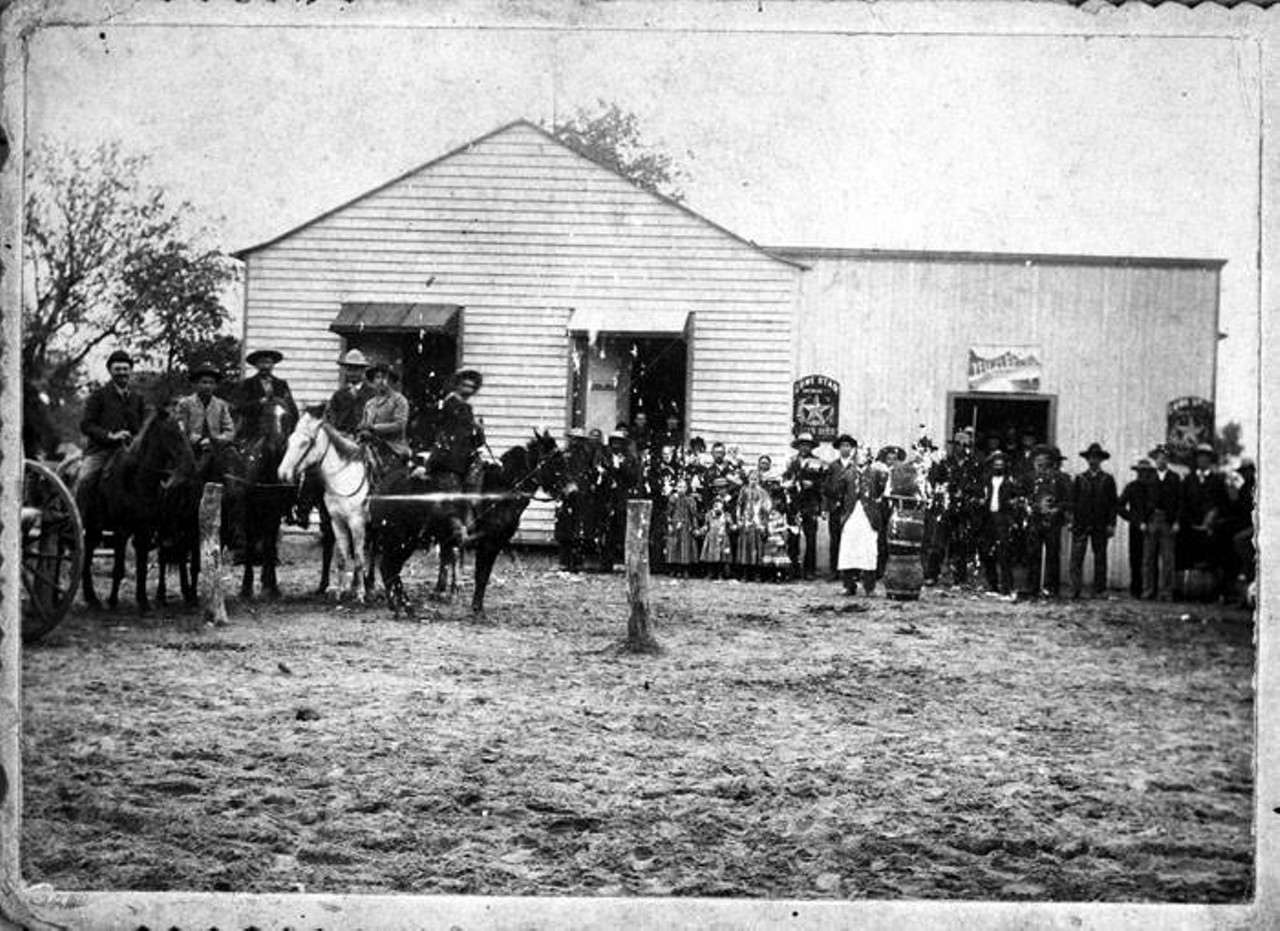
Unidentified saloon, St. Hedwig
This unknown drinking spot was photographed along with its Polish American patrons around 1900. Check out the signs for San Antonio-brewed Lone Star Lager Beer on the right side of the building.
This unknown drinking spot was photographed along with its Polish American patrons around 1900. Check out the signs for San Antonio-brewed Lone Star Lager Beer on the right side of the building.
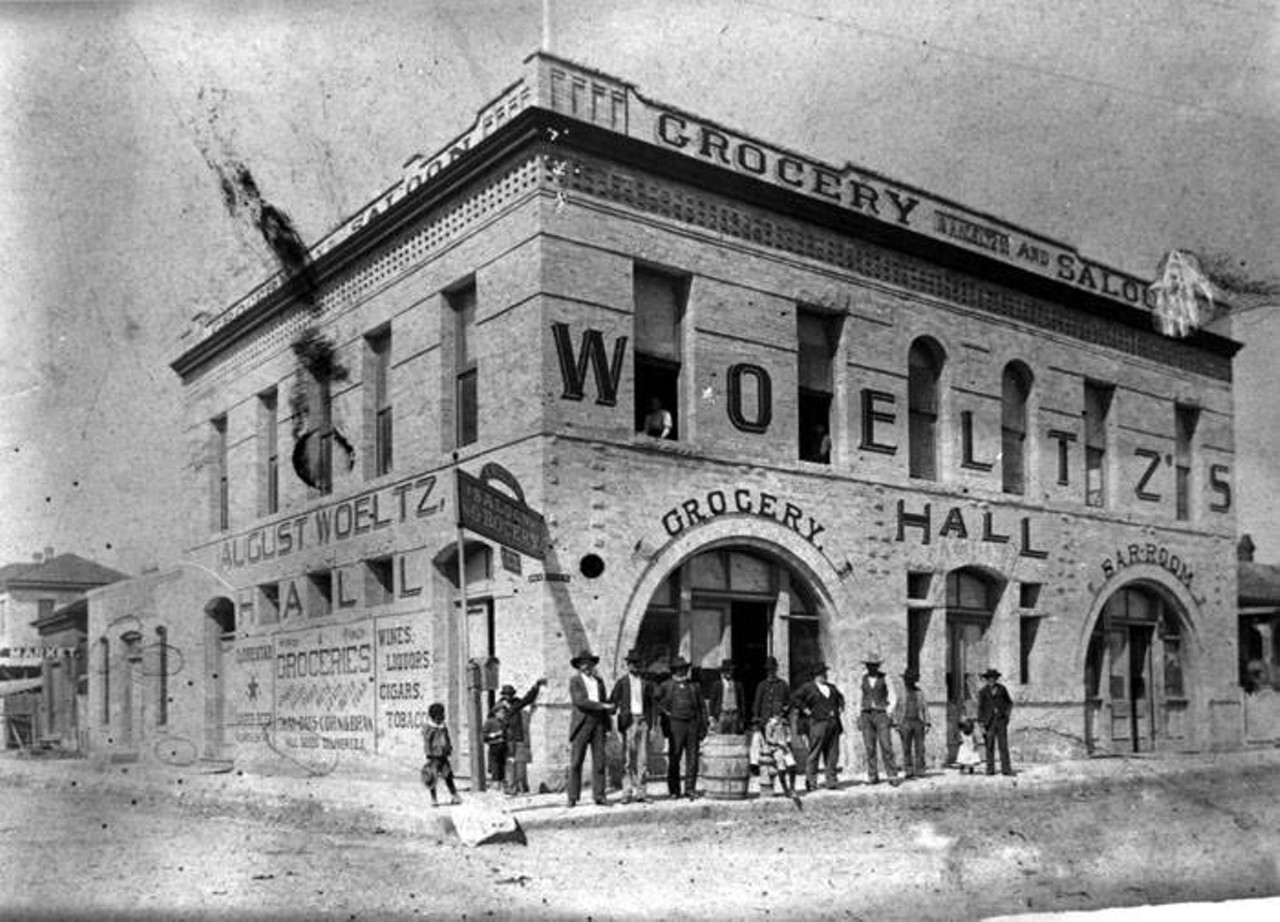
Woeltz Building, 401-405 N. Pecos St.
August Woeltz opened this building with a saloon and grocery on first floor. A meeting hall was located on the second, and still-operating Finck Cigar Co. also once occupied a spot in the structure.
August Woeltz opened this building with a saloon and grocery on first floor. A meeting hall was located on the second, and still-operating Finck Cigar Co. also once occupied a spot in the structure.

Peter Brothers Brewery and Saloon, San Antonio
This 1895 photo from the San Antonio-Express News’ collection shows the Alsatian American owners John Peter (seated on left) and Gus Peter (at center) of this beer-lovers’ paradise along with three other unidentified men.
This 1895 photo from the San Antonio-Express News’ collection shows the Alsatian American owners John Peter (seated on left) and Gus Peter (at center) of this beer-lovers’ paradise along with three other unidentified men.
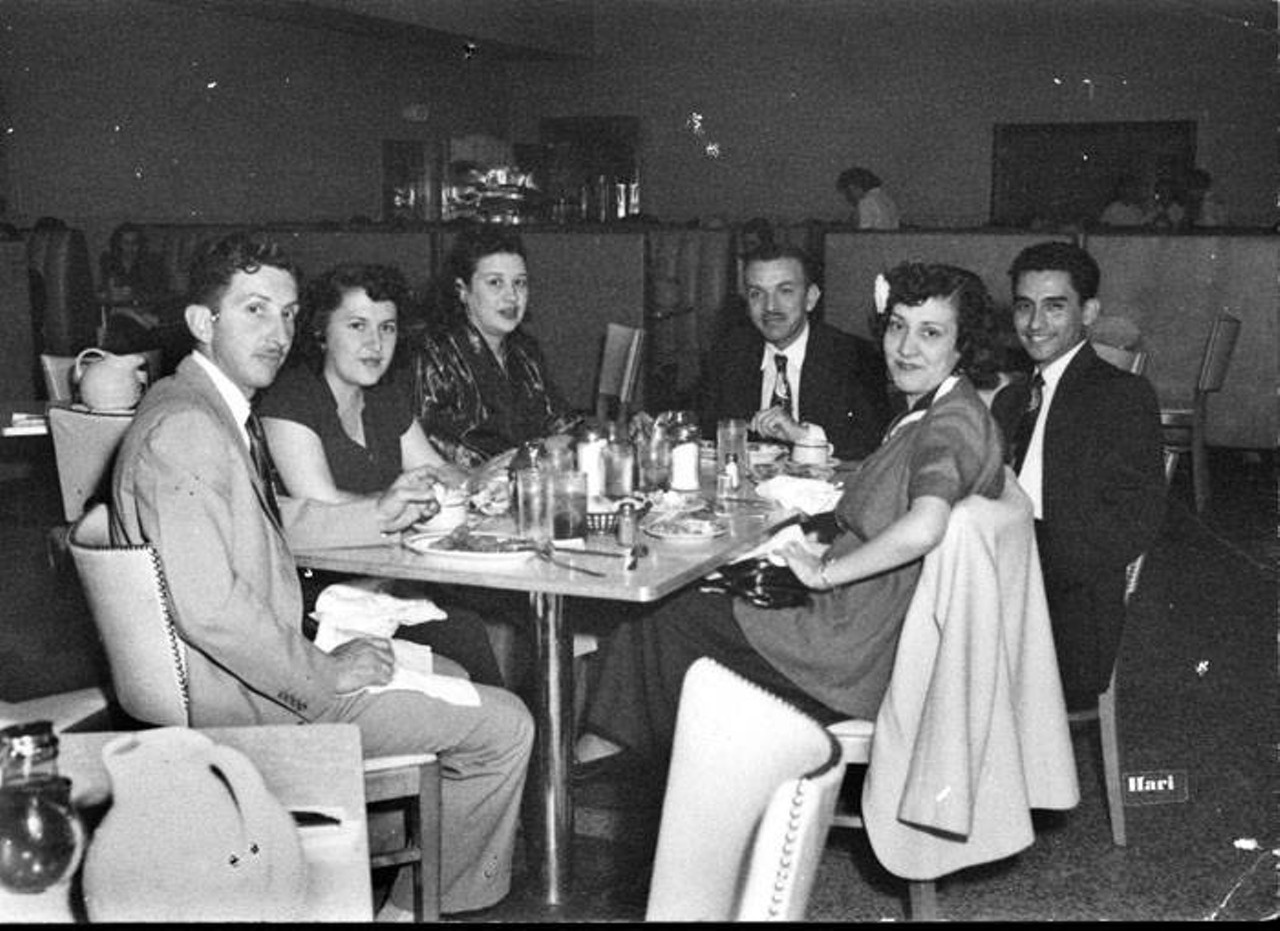
Youngblood's Fried Chicken, 2415 Broadway
Oscar and Rosalina Elizondo and friends enjoy a meal in this 1954 image. The Broadway restaurant was owned by a Waco-based chain that once operated 30 locations.
Oscar and Rosalina Elizondo and friends enjoy a meal in this 1954 image. The Broadway restaurant was owned by a Waco-based chain that once operated 30 locations.
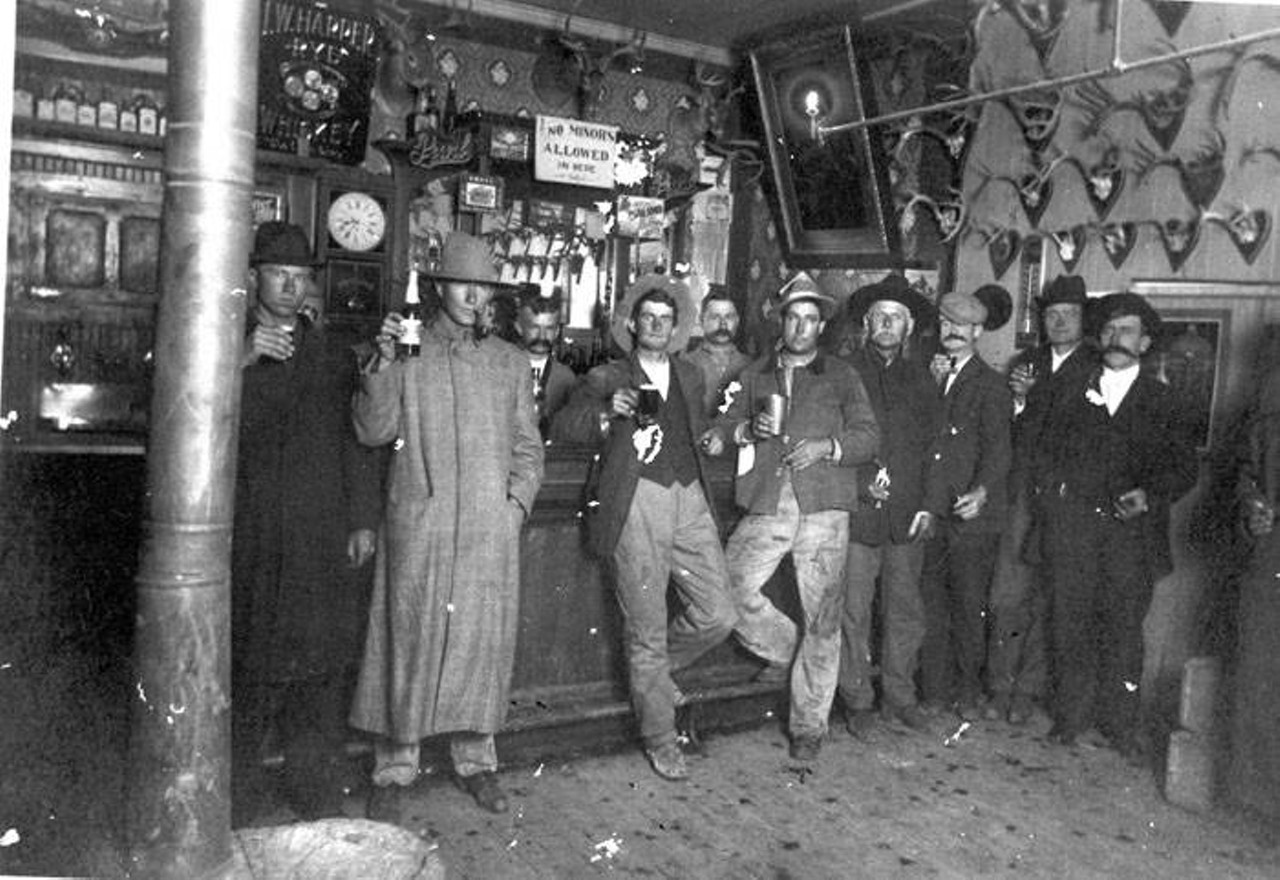
LaCoste Exchange, LaCoste
This photograph from somewhere between 1910 and 1912 shows patrons in a saloon owned by J.V. Reicherzer holding up bottles and beer mugs. LaCoste has since been absorbed into San Antonio’s northern sprawl.
This photograph from somewhere between 1910 and 1912 shows patrons in a saloon owned by J.V. Reicherzer holding up bottles and beer mugs. LaCoste has since been absorbed into San Antonio’s northern sprawl.
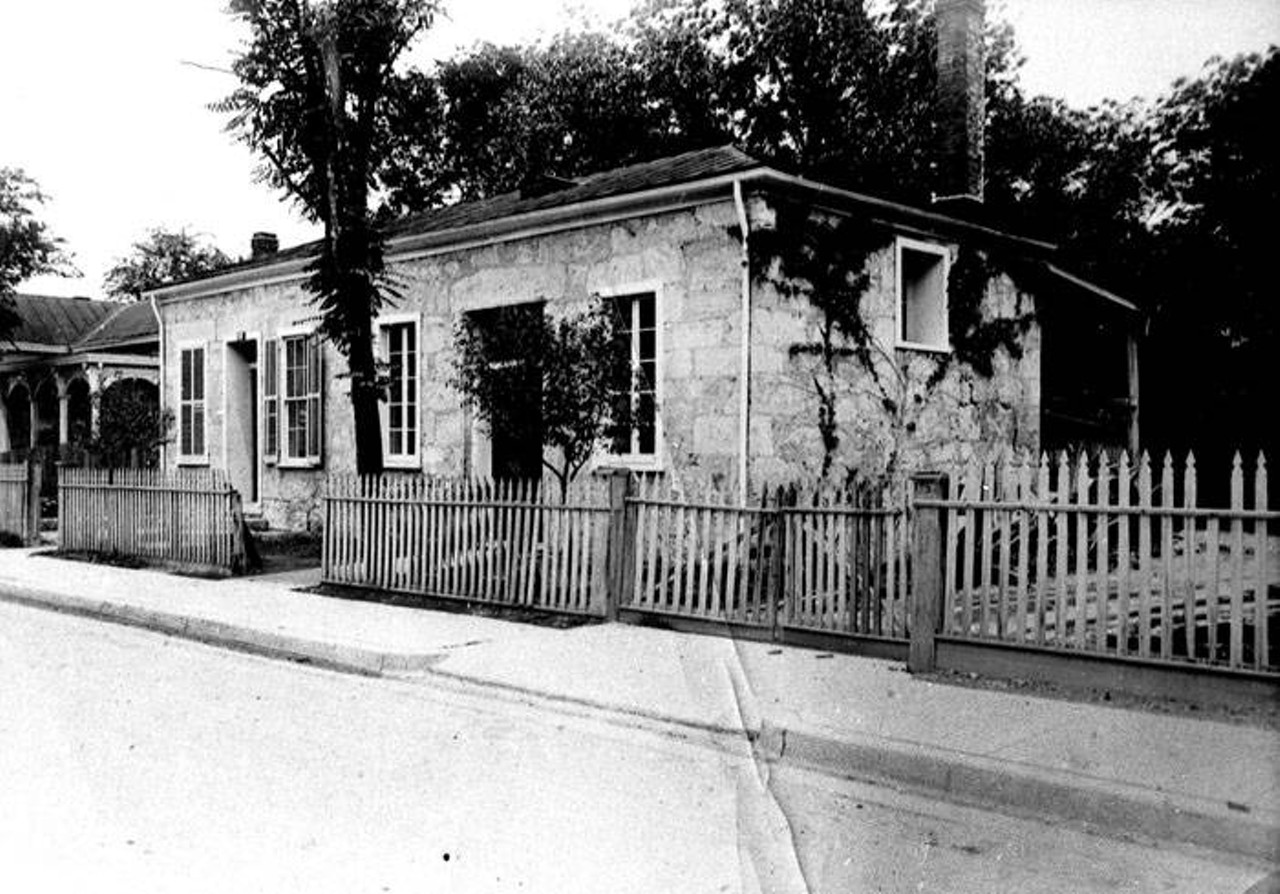
Charles Degen Brewery and Saloon, 237 and 239 Blum Street
The brewery and saloon were next door to each other with a beer garden conveniently located in back. The date of the photo is unknown.
The brewery and saloon were next door to each other with a beer garden conveniently located in back. The date of the photo is unknown.
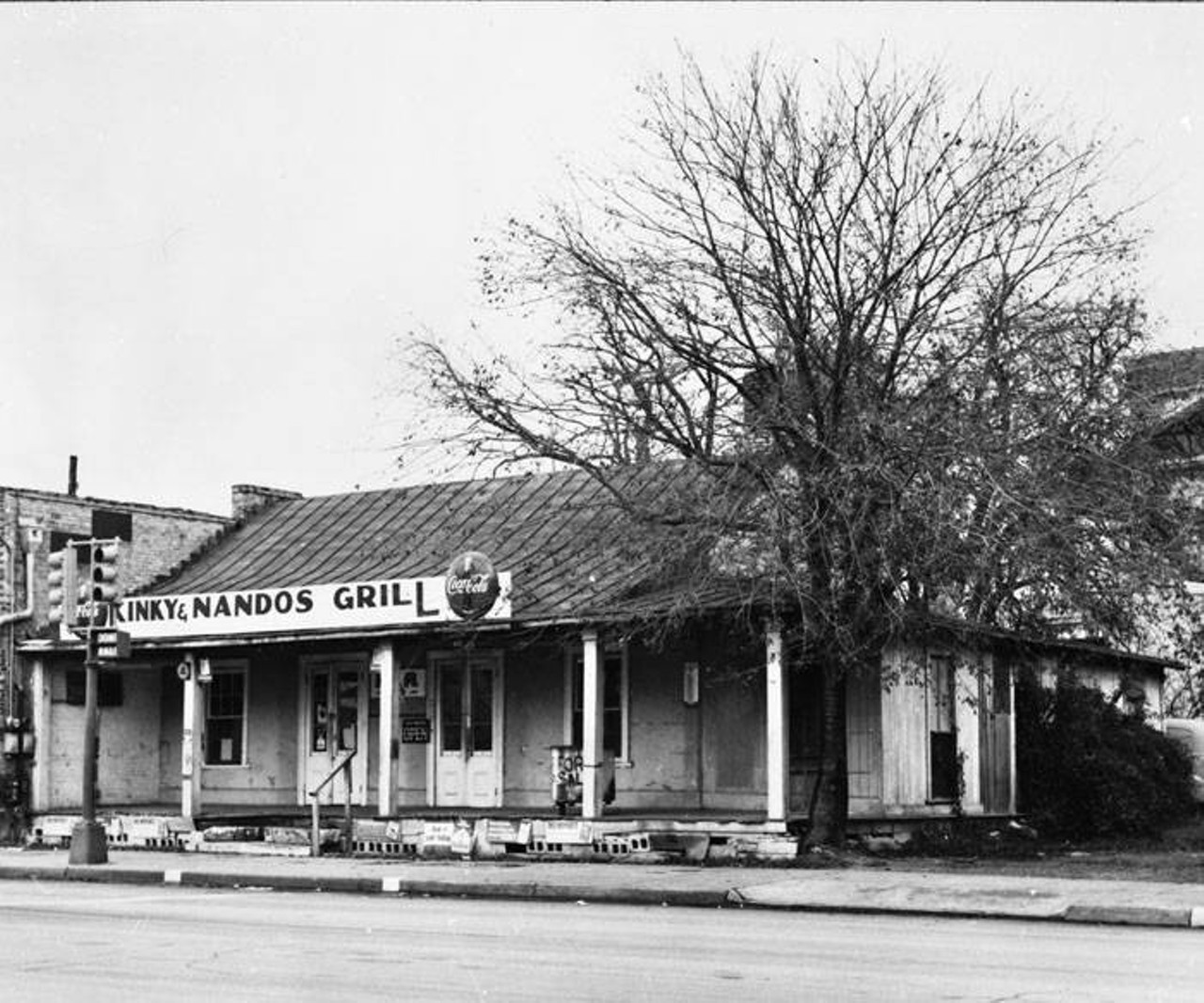
Kinky and Nando's Grill, 404 S. Alamo St.
This limestone-exterior restaurant, shown in a 1964 photo, was demolished a few years later to widen the street in preparation for HemisFair '68.
This limestone-exterior restaurant, shown in a 1964 photo, was demolished a few years later to widen the street in preparation for HemisFair '68.
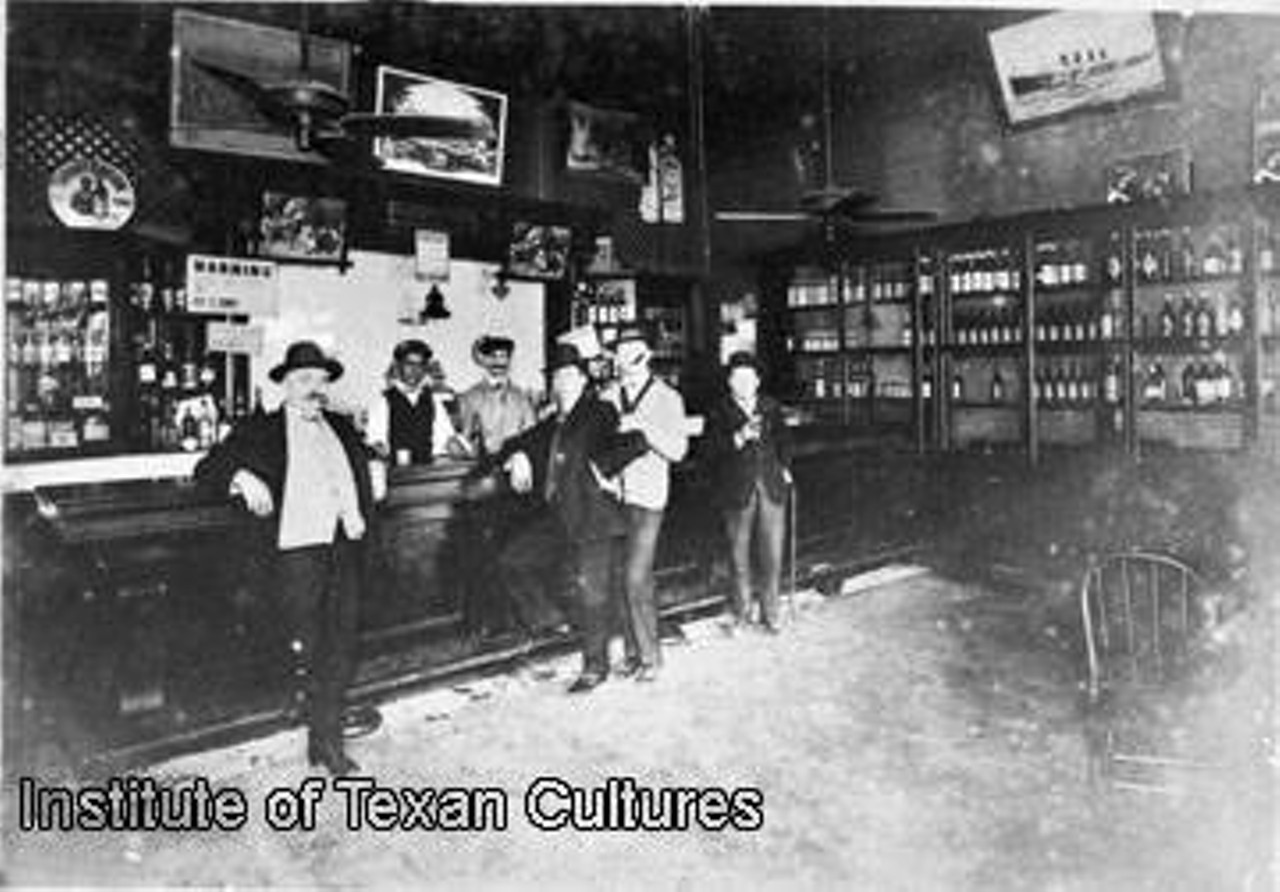
Louis Bizy Saloon Fine Liquors and Cigars, 1008 W. Commerce St.
The interior of Louis Bizy’s drinking and smoking spot — that’s him leaning against the bar at the left — was photographed around 1917. The space was was later occupied by iconic Tex-Mex restaurant Mi Tierra.
The interior of Louis Bizy’s drinking and smoking spot — that’s him leaning against the bar at the left — was photographed around 1917. The space was was later occupied by iconic Tex-Mex restaurant Mi Tierra.
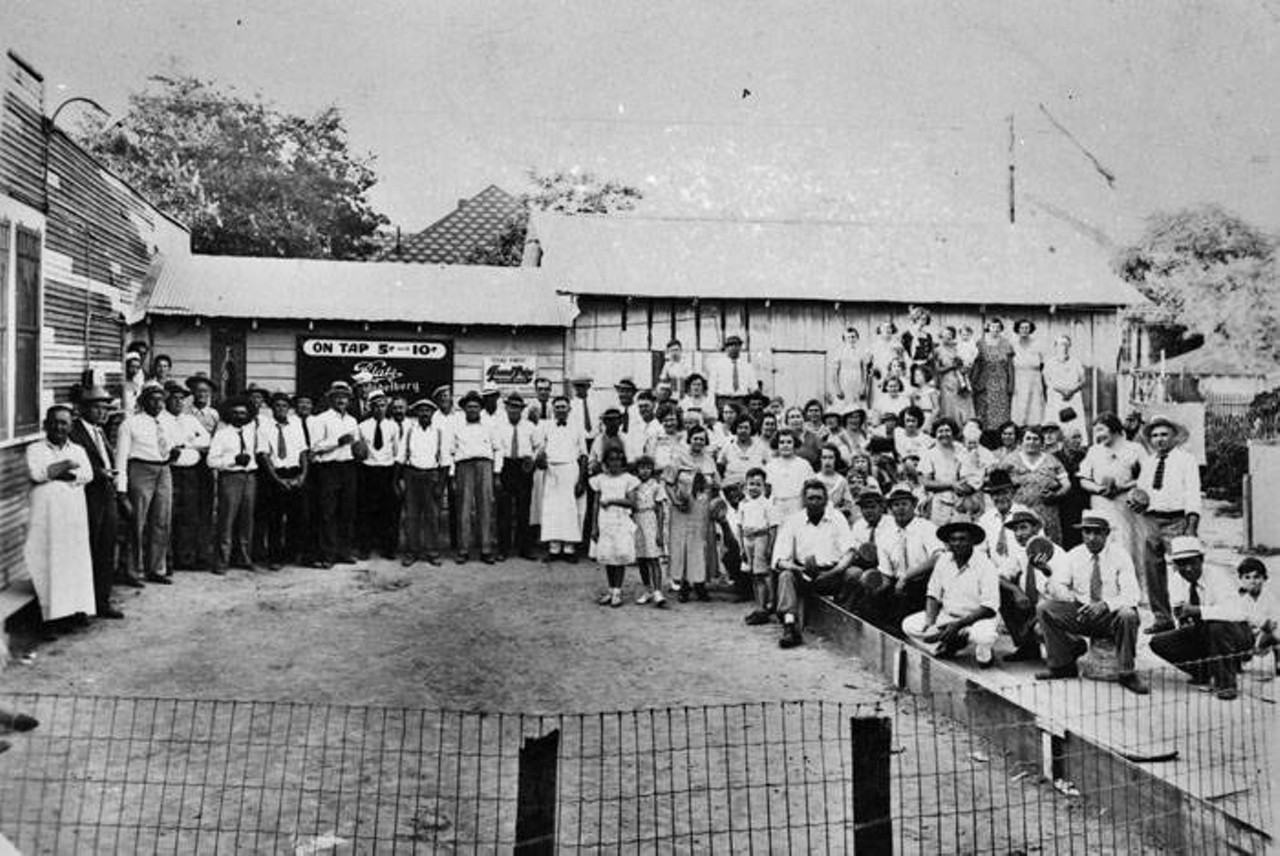
De Winne's Belgian Inn, 3119 W. Commerce St.
This early-’30s photo shows Belgian Americans gathered outside De Winne's for a game of bolling, or Rolle Bolle, a game somewhere between horseshoes and curling. Note the sign promoting 5 cent and 10 cent draft beer.
This early-’30s photo shows Belgian Americans gathered outside De Winne's for a game of bolling, or Rolle Bolle, a game somewhere between horseshoes and curling. Note the sign promoting 5 cent and 10 cent draft beer.
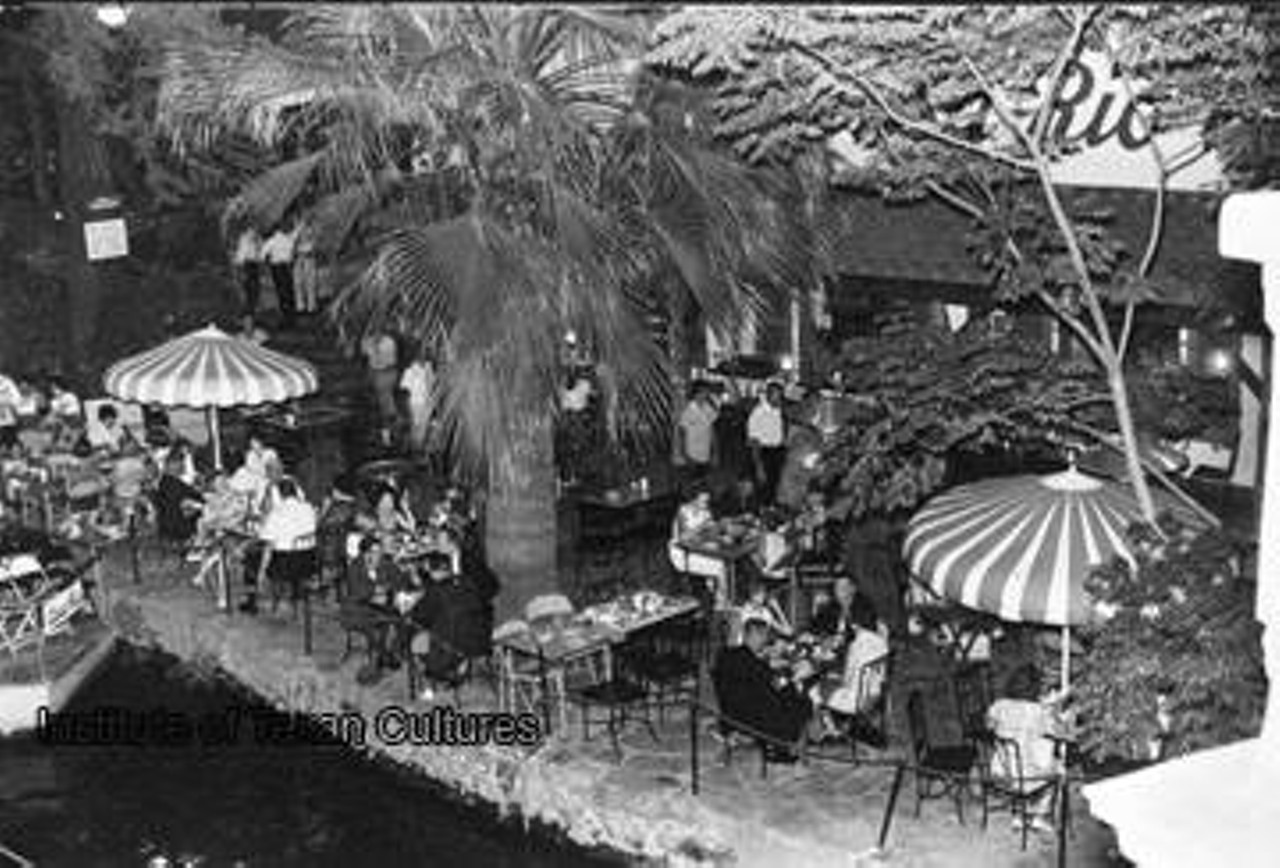
Casa Rio Restaurant, 430 E. Commerce St.
This shot, taken around 1965, shows diners eating at the downtown staple, which opened almost two decades prior. The restaurant was one of the pioneering businesses on the River Walk, and it’s still serving plenty of tourists.
This shot, taken around 1965, shows diners eating at the downtown staple, which opened almost two decades prior. The restaurant was one of the pioneering businesses on the River Walk, and it’s still serving plenty of tourists.
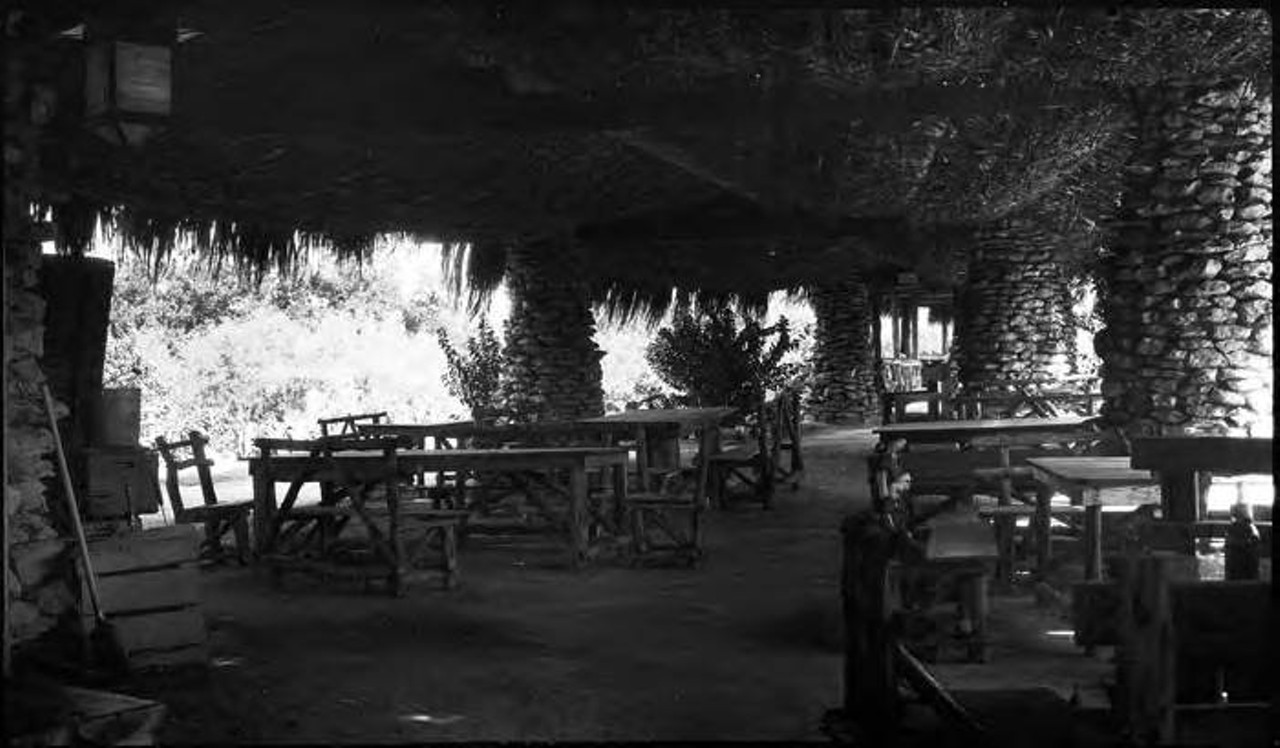
Japanese Tea Garden Pavilion, Brackenridge Park
Not only was the park a place to sightsee when this late-’20s photo was taken, the Japanese American Jingu family served tea and light lunches to visitors at the attraction’s Bamboo Room. During World War II, the family was evicted amid racist anti-Japanese sentiment. However, the children returned to participate in a rededication of the garden during the 1980s.
Not only was the park a place to sightsee when this late-’20s photo was taken, the Japanese American Jingu family served tea and light lunches to visitors at the attraction’s Bamboo Room. During World War II, the family was evicted amid racist anti-Japanese sentiment. However, the children returned to participate in a rededication of the garden during the 1980s.
Page 1 of 2







